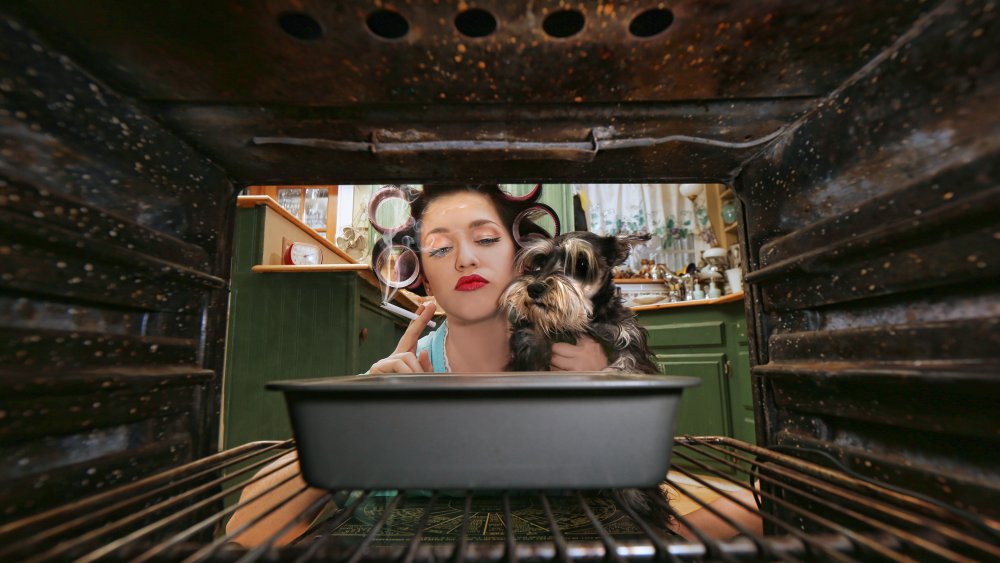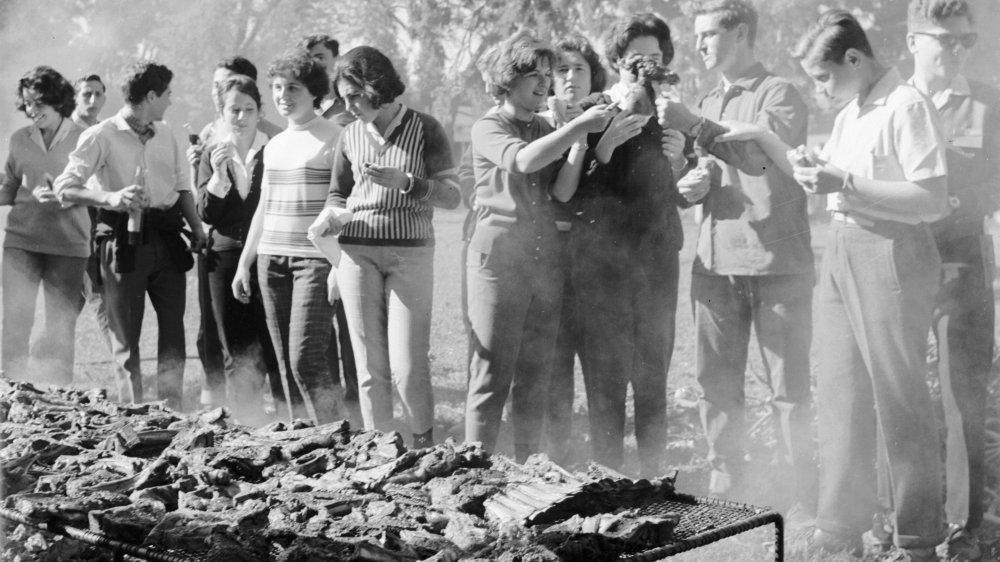What The Average American Diet Looked Like In The 1950s
The U.S. has a complicated relationship with food. Sometimes it resembles a love affair. Other times it's a marriage of convenience, specifically convenience stores. As How Stuff Works observes, millions of Americans are economically marooned in food deserts, areas where grocery stores are more expensive and farther away. This causes lower-income residents to turn to nearby liquor and corner stores and fast food joints as desert oases. The ginormous portions of food that get piled onto plates add to the problem, according to WBUR.
In 2019, the director of the National Institutes of Health, Dr. Francis Collins, lamented that U.S. citizens consume too much red meat, excessive saturated fat, and entirely too much sugar. According to the University of California, San Francisco, on average, Americans consume 57 pounds of added sugar annually, or roughly three to six times the recommended daily amount per day. Meanwhile, the American Heart Association finds that 90% of Americans eat twice the recommended daily amount of sodium.
Maybe you wish you could travel back to the 1950s, that wholesome era of "Leave It to Beaver," Cold War duck-and-cover drills, and school segregation. Perhaps you can almost taste the fear of nuclear doomsday, which was presumably a secret ingredient of the food back then. Diets back then had to be better than the salty glazed heart attacks people eat now, right?
Before fast food there was fat food
Meat-eating is arguably more American than apple pie, as the CDC notes, since only 10 percent of Americans eat enough fruit. The country's carnivorous nature has its roots in the 1950s. As detailed by the National Museum of American History, the prosperity of the postwar era made meat a staple for many American households. However, Depression-era frugality tempered the urge to pig out on prime cuts, with many cookbooks recommending the use of cheap deli meats. This is why outdoor grilling, potlucks, and "budget meals" shaped the American waistline. Swanson frozen TV dinners dominated. Canned soups and condensed milk, emblems of economic convenience, made their way into many a meal.
As highlighted by a 2008 article in the Journal of the History of Medicine and Allied Sciences, America's infatuation with fatty meals predates the age of fast food and defined the 1950s diet. Creamed tuna, meat loaf, deep-fried vegetables, breaded veal cutlets, and lamb chops, and cheese cake were highly popular foods. Throughout the South, people went to town on country ham, ham hocks, fried chicken, greens, and cornbread. For dessert, they ate homemade banana cream, coconut, pecan, and chocolate pies. As one lifestyle author said of the era, "The only sanctioned pleasurable activity was eating."

